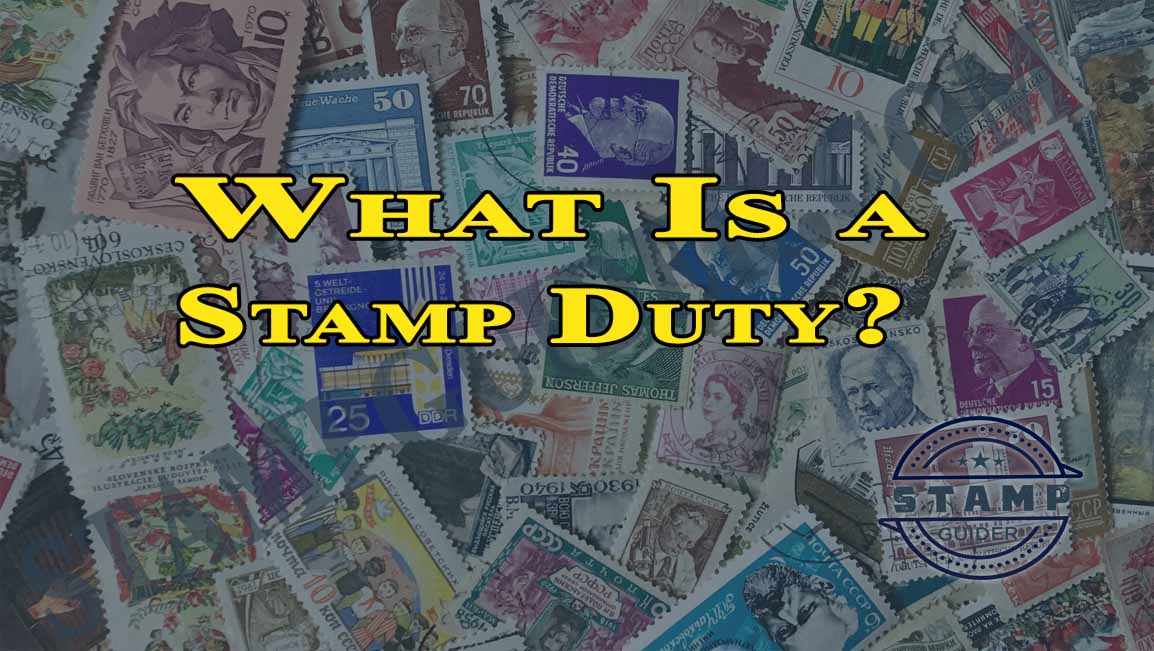Stamp duty is the tax that governments place on legal documents, usually when transferring assets or property. Governments impose stamp fees, also known as stamp fees, on documents that are required to legally record certain types of transactions. This includes legal documents that register weddings, military commissions and the sale or transfer of property.
Historically, governments have imposed these taxes in order to raise money to finance government activities and projects. Stamp duties are believed to have originated in Spain in the early 17th century. These taxes were called stamp duty because a physical stamp was used on the document as proof that the document had been registered and the tax obligation paid.
- A stamp duty – also known as stamp duty or documentary stamp duty – is a tax that the government imposes on documents that are legally required to record certain types of transactions.
- Governments have imposed stamp duty on a variety of documents, including those related to the sale or transfer of property, real estate, patents, titles and copyrights.
- Governments impose these taxes as a source of revenue to finance government programs and activities.
Understanding stamp duty
Stamp duty is also known as document stamp duty. Governments around the world charge these taxes on a variety of legally registered documents. Governments have imposed stamp duties on the transfer of residences, buildings, copyrights, land, patents and titles.
Before income and consumption taxes formed a substantial tax base, governments increased their revenues primarily through property taxes, import taxes, and stamp duties on financial transactions. However, as income and consumption increased, it might have been wise to remove the stamp duty. So why do we still have them?

Simply put, they provide a steady stream of income to governments to fund their activities. Today, however, stamp duty applies to much less than the broad category of “financial transactions”. However, they remain on the properties. They are charged when a property is transferred or sold, and in addition, many states charge taxes on mortgages and other secured mortgage loan instruments.
Although the United States previously imposed stamp duties on various transaction documents, today there is no federal stamp duty. Only states charge stamp duty in the United States. Stamp duties are maintained as a reliable source of revenue for states and to prevent people from making speculative investments in real estate.
History of Stamp Duties in the United States
In the 17th century, governments introduced stamp duties all over Europe. In the following century, they became a common form of taxation in Holland, France, Denmark, Prussia and England.
Americans will recall that the stamp tax was instituted when the British Parliament Stamp Act was passed in 1765. The tax was imposed on American settlers who were required to pay taxes on all printed papers, such as licenses, logs, ship documents and other legal documents. documents. The British government said stamp duty funds were needed to pay for the deployment of troops in parts of America and to pay off the enormous war debt incurred by Britain during the Seven Years’ War.
American settlers were outraged by the imposition of additional taxes, which they said was Britain’s deliberate attempt to control trade and restrict colonial independence. The stamp duty was promulgated without the knowledge of the colonies or without their contribution; enactment of this type of legislation has come to be known as taxation without representation. The Stamp Act led to the settlers’ first concentrated effort to resist British rule and is seen as a milestone that led to the American Revolution.
Additional information of Stamp Duties
At the end of 2017, the UK government abolished the Land Stamp Tax (SDLT) on houses up to £ 300,000 and said for properties up to £ 500,000 no stamp tax would be paid on the first £ 300,000. This has led to significant reductions in stamp duty for 95% of first-time home buyers, with 80% paying no stamp duty. And, according to the UK government, that means savings of up to £ 5,000 for first-time buyers.
The tax cut came when the Conservative Party tried to solve a rather serious housing crisis in the UK. Labor criticized the measure at the time, as a half-measure, which would not keep homes affordable, but raise prices.


